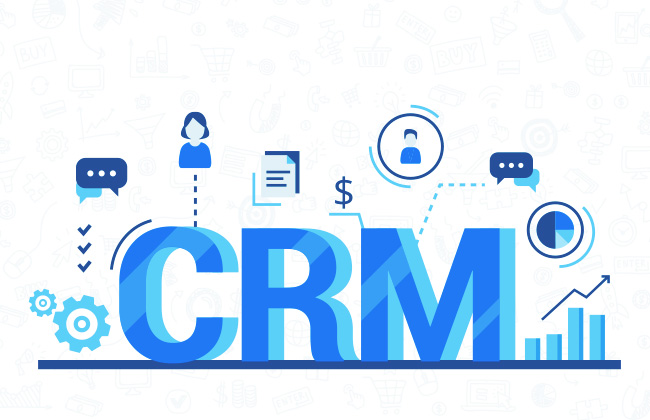Customer data integration (CDI) and information can be gotten from various marketing channels. This is applicable for both regular customers and potential customers. These data can be from sales, social media following, website visits and viewership, customer service, and many other sources that your brand deems necessary.
The scattered nature of these data can create a clutter that makes effective B2C marketing cumbersome. Not forgetting that the preferences of a customer are an ever-changing dynamic that can hugely impact your marketing campaign.
To have a single comprehensive view of a customer’s data, you need to integrate all the data from the various sources into one hub. This does not only help you declutter, it aids effective decision making.
Decision making on what approach to take in reaching out to a customer is a critical aspect of the marketers’ job description. You need to come out with the right approach at all times to ensure that customers are constantly in sync with what you are offering. Hence marketers are keen on using and acting on integrated customer data.
One important thing that Customer Data Integration (CDI) does for you is the ease of combining social media behavior, search behavior, transactional behaviors, and other behavioral patterns to effectively reach out to a customer. The knowledge of how people behave across multiple online platforms goes a long way in helping businesses outline their customers’ imminent preferences and send out the right messages when it is needed by the customer.
Three Things to Keep in Mind About CDIs
To effectively understand what CDI can do for you, these three facts must be registered in your subconscious:
- Seasons affect how customers decide what and what not to prioritize in their purchase list. You should be able to monitor behavioral changes that are affected by season.
- You need to understand the role of culture and happening events in customers’ interest. The way and manner these events and cultural influences affect your marketing strategies can be perfectly understood with a CDI.
- CDI is important if you want to understand how your marketing investments are paying off. For instance, if you sign sponsorship deals with multiple event organizers, a CDI can help you track ROI for those events.
Knowing that CDI can help you and what it can help you with is not enough. You need to know how this is going to help you. Below are a few ways that CDI can help you declutter.
1. Customer Differentiation
To accurately identify a particular customer, CDI is what you need.
For instance, a financial institution that gives out loans will definitely need a CDI for this process. Basic information about a customer needs to be gotten before the loan is granted. One important information is email Identification.
It is usually difficult to get accurate data as some customers might decide to falsify data or even change the email Identification after application. But with a CDI, you can pull the customer’s data from different sources into a single source and verify data provided by the customer.
This enables the customer service executive to know what other measures to take going forward with the customer.
This approach is applicable to other businesses. Being able to correctly pick out a customer from the lot is quintessential. With the constant updates of a customer’s data in the CDI, it is easier to accurately and seamlessly identify a particular customer.
2. Product Sales
One of the biggest challenges of a marketer is to understand market dynamics as it has to do with customers’ purchasing ability. This is an important pointer to what kind of product or service to market to a customer and at what price to peg it.
For instance, you have a product in the market that is selling for $1,000 and there are over 10,000 people willing to buy the product at $700. With a CDI, you will be able to instantly identify this problem and possibly create a similar product that agrees with the budget of the majority of the customers willing to purchase the product.
If you are going to make a large product launch, the CDI will also help you identify customers that will be willing to pay the specified amount for the product. This will take care of the risk of putting up a product that your customers can’t afford. It also saves you the stress of having to go through the hurdle of doing a survey or a capital intensive market intelligence, which by the way saves your time.

3. Ensuring a Single Version of Fact
Improper data entry across many platforms can pose a big challenge for the marketer. This gives room for inconsistencies in data matching.
In the case of the bank issuing a loan facility, it could be difficult to match the records with available customer data when there is a faulty data entry. Therefore standardising of captured data is of paramount importance.
This is where CDI merges with Metadata Management. With this fusion, errors in data entered for a particular customer across many channels can be synthesized and a single version that has a complete and accurate picture of the customer can be generated.
4. Cost Cutting for Marketing Promotions
In addition to treating customers as individual and unique entities, you could also group data to identify customers with certain similarities that can help you segment your marketing promotions.
For instance, if you want to deliver mails to a husband and his wife in order to promote a particular household product, it is possible that they are listed as individual entries. The CDI helps you group them together using their mutual address. This can save you the cost of paying for two deliveries.

5. Managing Your Martech Applications
Customer Data Integration is critical as well as vital in the effective management of your other marketing tech tools. For instance, a Customer Relationship Management (CRM) engine is as good as the CDI powering it.
Most brands use CDI to have a complete and comprehensive view of the customer. Synergizing it with a functional CRM delivers a lot of results when it comes to customer retention.
Therefore, get rid of the clutter. Integrate all your customer data as one and your marketing processes will be made a whole lot easier and profitable.

